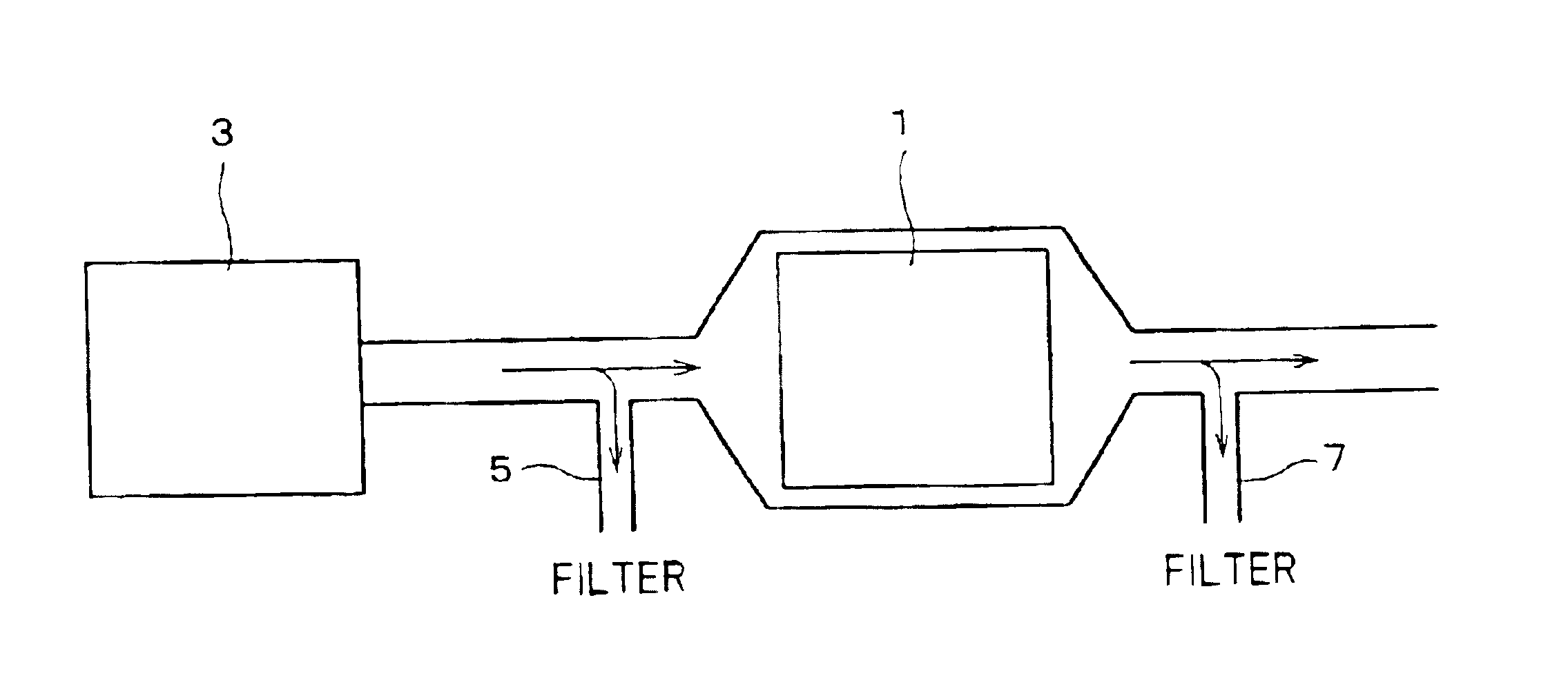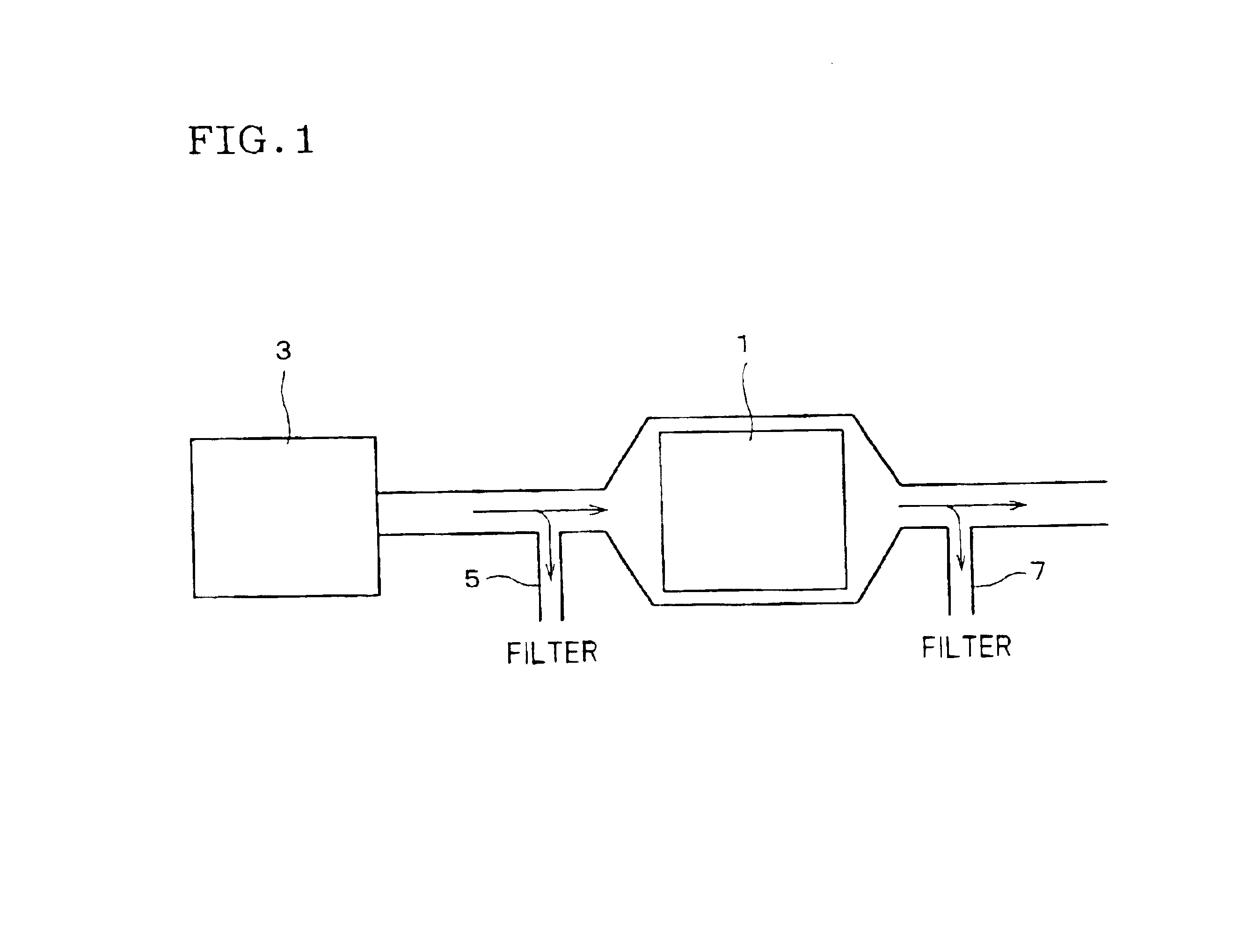Filter made of porous ceramic sintered body
a technology of porous ceramic and sintered body, which is applied in the direction of machines/engines, chemical/physical processes, domestic applications, etc., can solve the problems of increasing pressure loss, inevitably required adjustment, and the inability to produce any kind of filter having any average pore diameter and any distribution of pore diameter according to various kinds of uses
- Summary
- Abstract
- Description
- Claims
- Application Information
AI Technical Summary
Benefits of technology
Problems solved by technology
Method used
Image
Examples
Embodiment Construction
The present invention is described in more detail on the basis of Examples. However, the present invention is by no means limited to these Examples.
(Manufacture of Filter)
There were manufactured DPFs of cordierite and DPFs of SiC having a columnar shape of an outside shape having a diameter of 150 mm, a length of 150 mm, and various kinds of thickness of partition walls as shown in Tables 2 and 3. Thickness of the partition wall was varied by substituting nozzles used for a honeycomb extrusion molding. Thus produced cordierite DPFs and SiC DPFs were measured for a distribution of pore diameters (a diameter) and an average pore diameter (a diameter) by a method of mercury penetration, and results as in Table 1 could be obtained. As for DPFs of the same materials, because the same manufacturing method and the same raw material were employed even if a thickness of the partition wall is different from one another, the similar distribution of pore diameters and average pore diameter were...
PUM
| Property | Measurement | Unit |
|---|---|---|
| diameter | aaaaa | aaaaa |
| diameter | aaaaa | aaaaa |
| porosity | aaaaa | aaaaa |
Abstract
Description
Claims
Application Information
 Login to View More
Login to View More - R&D
- Intellectual Property
- Life Sciences
- Materials
- Tech Scout
- Unparalleled Data Quality
- Higher Quality Content
- 60% Fewer Hallucinations
Browse by: Latest US Patents, China's latest patents, Technical Efficacy Thesaurus, Application Domain, Technology Topic, Popular Technical Reports.
© 2025 PatSnap. All rights reserved.Legal|Privacy policy|Modern Slavery Act Transparency Statement|Sitemap|About US| Contact US: help@patsnap.com


